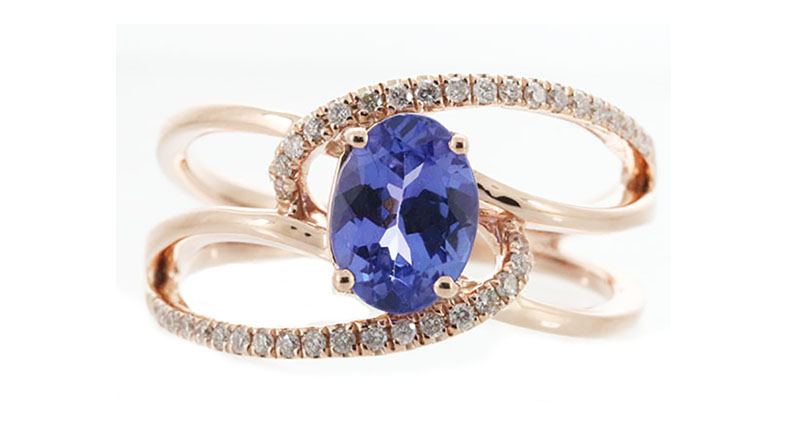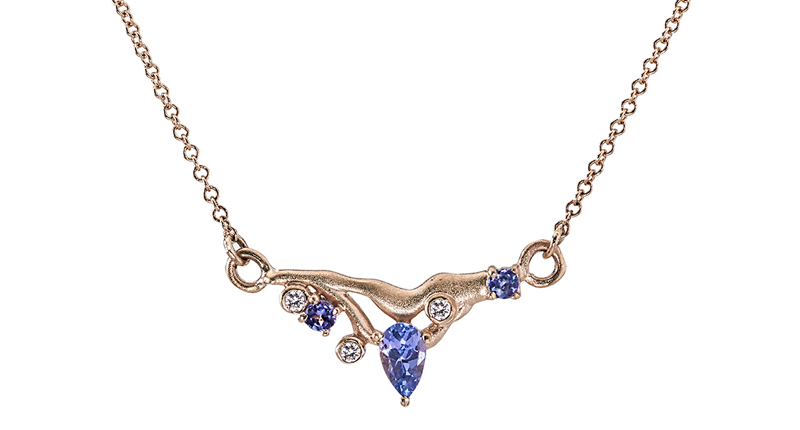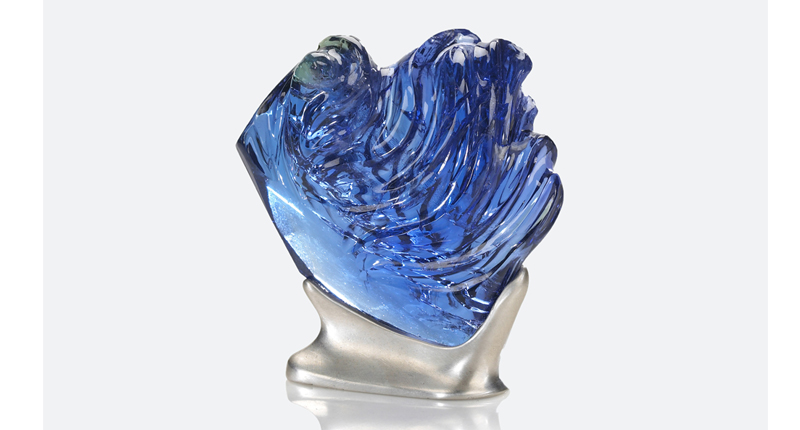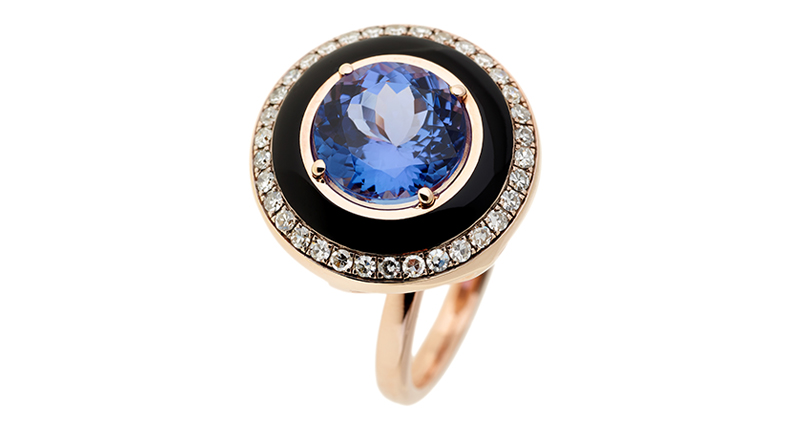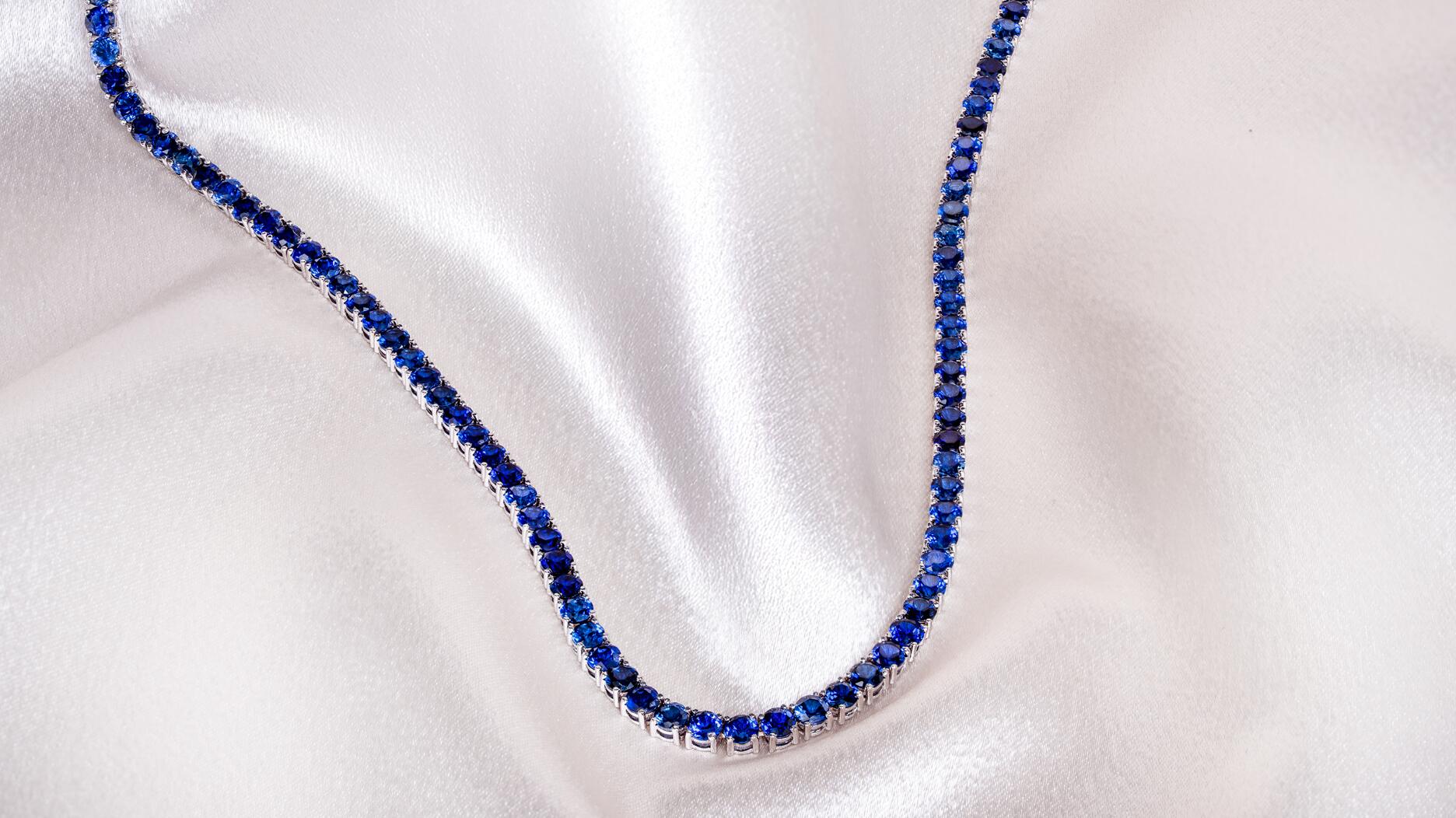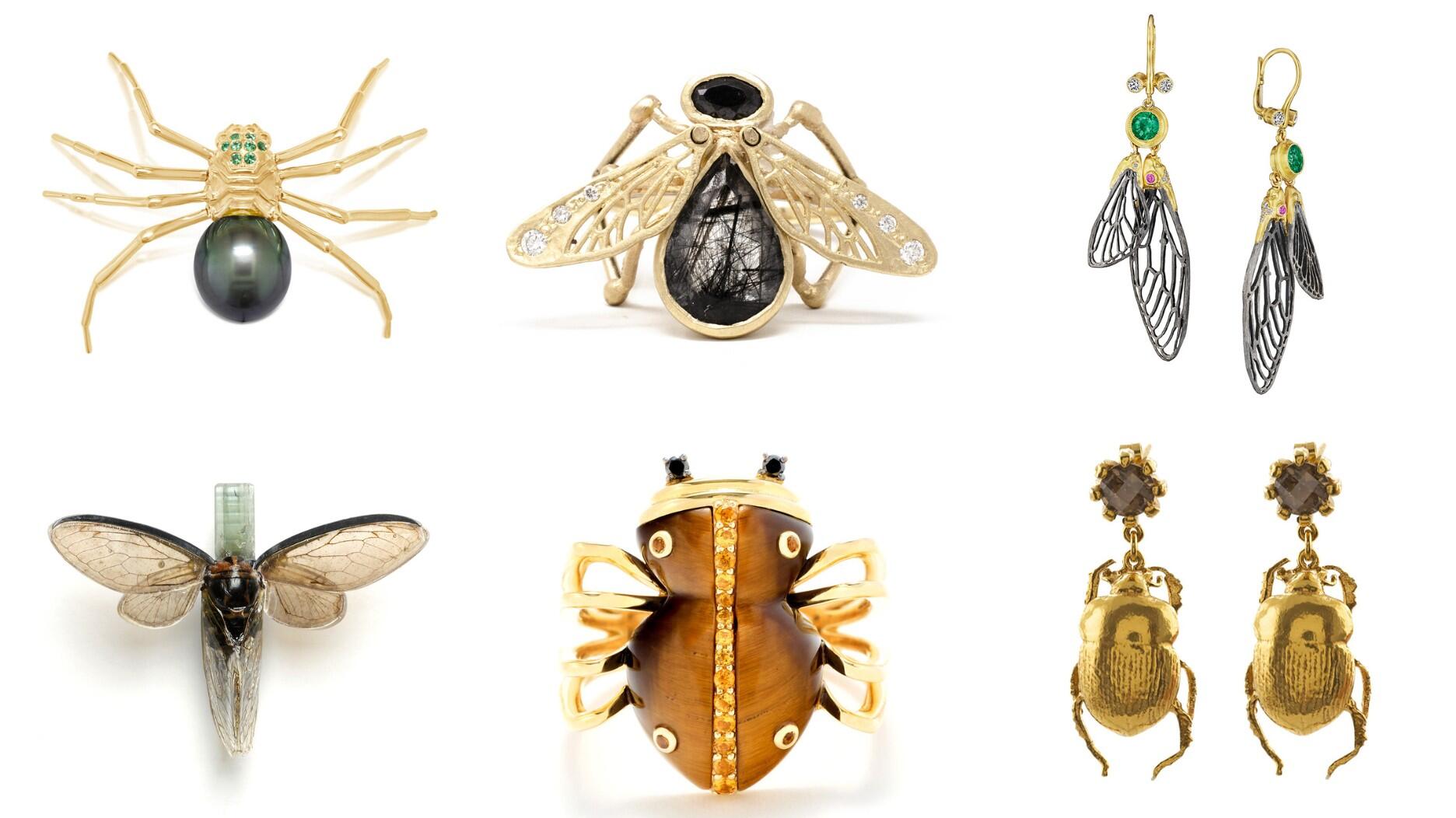Set in a Tiffany & Co. necklace, it sold for $4.2 million, the highest price and price per carat paid for a Paraíba tourmaline at auction.
Another Golden (Gem) Anniversary: Tanzanite Turns 50
Five decades after the discovery of the popular blue gemstone, here’s where the market is today.

Tanzanite turned 50 this year, and there are a number of reasons to celebrate and highlight the stone: a fine quality tanzanite can compete with some of the best in color, and the gemstone’s story is so interesting because it shares such a strong connection to its place of origin.
In 1967, a Maasai tribesman came upon blue crystals in northern Tanzania. He alerted a local prospector named Manuel d’Souza, who figured out that it was, in fact, a new gemstone that had been discovered.
Campbell Bridges, known for his discovery of tsavorite garnet (which also celebrated 50 this year), then helped bring the stones to the West and to the attention of Tiffany & Co., which named tanzanite after its country of origin and brought it to the gem market with an official launch in 1968, according to the Tanzanite Foundation.
The stone has risen in popularity in the colored stone world and, in fact, was added to the birthstone list in 2002. And yet even today, the foothills of Mount Kilimanjaro remain the only place where tanzanite is mined.
There are very few instances where a gemstone is so closely tied to the land from which it is sourced, making tanzanite unique in the world of gems. Because the gem is sourced solely in that area, it’s also closely tied to the political climate in Tanzania and there’s a significant amount in flux there right now.
The Current Events
In May, President John Magufuli fired the mining minister and the chief of the state-run mineral audit agency, according to Reuters, after an investigation into the possibility that some mining companies weren’t declaring all exports in order to evade taxes.
Then in September, the government ordered the military to build walls around the tanzanite mines to control the supply as it leaves the mining site. This came, it said, in response to an investigation that found many cases of smuggling.
That same month, Magufuli announced that he had signed into law new mining bills that required the government to own at least a 16 percent stake in mining projects.
The law also increased duties on gold and minerals, which, among other things, increased the taxes on rough gemstones to be exported from the country.
Gemstone cutter Roger Dery, who travels to Tanzania a few times a year, said he thinks the government’s move to be more stringent
Still, he doesn’t think that the increased duties and prices of tanzanite will act as a deterrent for sellers, especially those dealing in larger stones.
After all, demand for the stone is still high, he said, especially for him: “Within the past year, I’ve sold more tanzanite than I can ever recall.”
Bruce Bridges, son of Campbell Bridges, said via email that he’s seeing a lower supply of tanzanite right now, due in large part to what’s happening on the ground over there.
He said all of these actions have led to a decrease in confidence in the gem sector there. “When confidence is down, investment in mining goes down, which leads to less supply.”
Additionally, he noted another factor coming in to play.
All of the hurricane activity the Caribbean saw this fall, and the devastation that came to so many islands as a result, has had a massive impact on tourism to the area. Since a decent amount of tanzanite is sold through cruise ship tourism, which has been so affected by the hurricanes, there are fewer potential buyers of tanzanite.
So due to a combination of factors--a decreased supply accompanied by a decreased demand--Bridges said prices are fairly stable.
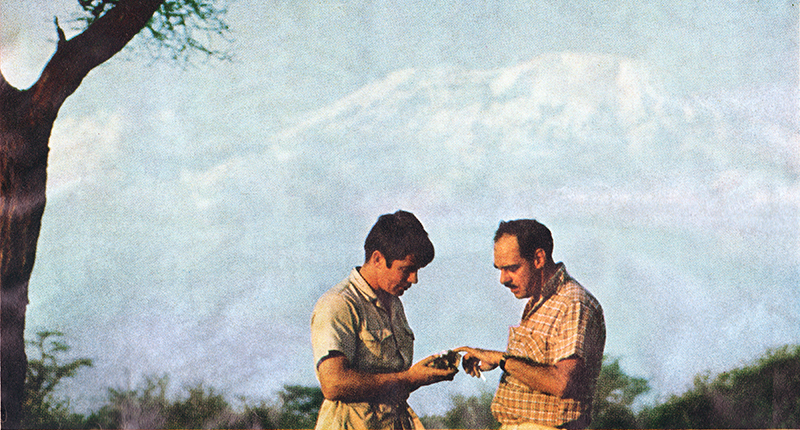
Alan Hackman of Intercolor echoed that, noting that because the tanzanite mining sector is controlled by only a few--and even fewer who have a strong enough financial backing to hold on to material instead of releasing it as it comes to sell--there’s a lot on the market, so prices are stable.
He also said that while he does think the hurricanes could have an effect on demand, he thinks it will only be a short-term issue.
The Opportunity of Fine Gems
These days, there’s a “reasonably consistent” quality standard across the board, Bridges said. And though that’s accompanied by a slight decrease in the larger, finer materials, no one should have too many issues currently in getting what they need, even if that comes in the form of older stock.
For Intercolor, the biggest change in quality of supply lately has been in the colors; Hackman estimates that 95 percent of the tanzanite they’re seeing now displays more purple than blue.
Given the fact that they believe when tanzanite is cut from the purple axis, the yield is higher--as opposed to cutting from the blue axis, which he believes is weaker and more prone to damage--this change is not necessarily a bad thing, he said.
For Dery and designer and carver Naomi Sarna, getting their hands on the quality they want hasn’t been an issue.
Sarna started working with tanzanite in 2013, telling National Jeweler that she thinks it’s the “most beautiful of the blue stones.”
In addition to her love for the stone, which she says is shared by her customers, Sarna also has a strong connection to Tanzania. She often travels to the country to source gems and currently is part of a project that teaches Maasai women how to make wire-wrapped jewelry as a source of income.
Her most recent venture is to sell “L’heure Bleu,” a carved tanzanite weighing 725 carats. All of the profits from the $500,000 price tag will go toward much-needed eye care for Maasai women.
She’s eager to help provide the seed that will help support a program for these women and the Tanzanian people, who she said are “eager to improve their lot in life.”
Her involvement there provides an example for one of the major conversations in the colored stone sector right now: establishing sustainable practices and livelihoods in gemstone communities.
This support is especially important for a place like Tanzania, where tanzanite and the community around it are so interconnected that every change has a direct impact on the gemstone community.
“Government actions concerning mining, licensing, import and export in the near term will have a resounding effect on the industry and sustainable futures of these gemstones,” Bridges said.
He added: “There is a great history behind tanzanite and a wonderful worldwide market that has been developed. It would be very sad, indeed, if the Tanzanian government were not to help nurture and honor this gemstone’s continued development in a constructive way.”
The Latest

The jeweler’s “Deep Freeze” display showcases its iconic jewelry designs frozen in a vintage icebox.

Take luxury gifting to new heights this holiday season with the jeweler’s showstopping 12-carat sphene ring.

How Jewelers of America’s 20 Under 40 are leading to ensure a brighter future for the jewelry industry.

This year's theme is “Unveiling the Depths of the Ocean.”


In its annual report, Pinterest noted an increase in searches for brooches, heirloom jewelry, and ‘80s luxury.

Starting Jan. 1, customers can request the service for opal, peridot, and demantoid garnet.

Roseco’s 704-page catalog showcases new lab-grown diamonds, findings, tools & more—available in print or interactive digital editions.

The 111-year-old retailer celebrated the opening of its new location in Salem, New Hampshire, which is its third store in the state.

The new catalog features its most popular chains as well as new styles.

The filmmaker’s personal F.P. Journe “FFC” prototype was the star of Phillips’ recent record-setting watch auction in New York.

The new location in the Design District pays homage to Miami’s Art Deco heritage and its connection to the ocean.

Inflations, tariffs, and politics—including the government shutdown—were among consumers’ top concerns last month.

“Longtime favorite” presenters, as well as first-time speakers, will lead talks and workshops at the annual event in Tucson next year.

Silas Smith of Meridian Metalworks won the challenge with his pendant that blends Australian and American landscapes.

The sale of the 31.68-carat, sunset-hued stone was part of Sotheby’s first series of events and auctions in Abu Dhabi.

Most customers who walk into your store this month have made up their minds. Your job is to validate their choice, Emmanuel Raheb writes.

The collection features characters and motifs from Ukrainian folklore, including an enchanted mirror and a magic egg.

MatrixGold 3.11, the newest version of the jewelry design program, offers more flexibility, precision, and creative control.

The pavilion will be part of the 2026 JA New York Spring show, scheduled for March 15 to 17.

Kadet, a 1994 National Jeweler Retailer Hall of Fame inductee, helped grow the family-owned retailer in the Chicago area and beyond.

Billed as the world’s smallest wearable, Lumia Health’s new smart earrings have a health tracker subtly embedded in the back.

Don’t let those with December birthdays feel blue. Help them celebrate their month with blue zircon, turquoise, and tanzanite.

The new pink sapphire version of the piece dances with its wearer in the brand’s “Icons After Dark” holiday campaign.

A choice that’s generated a lot of commentary, Pantone says “Cloud Dancer” marks a fresh start and encourages relaxation and creativity.

The manufacturer’s holiday campaign features a gift guide filled with trending designs and jewelry that can be personalized.

The man was charged with theft, accused of ingesting the necklace while in a jewelry store in Auckland, New Zealand.









